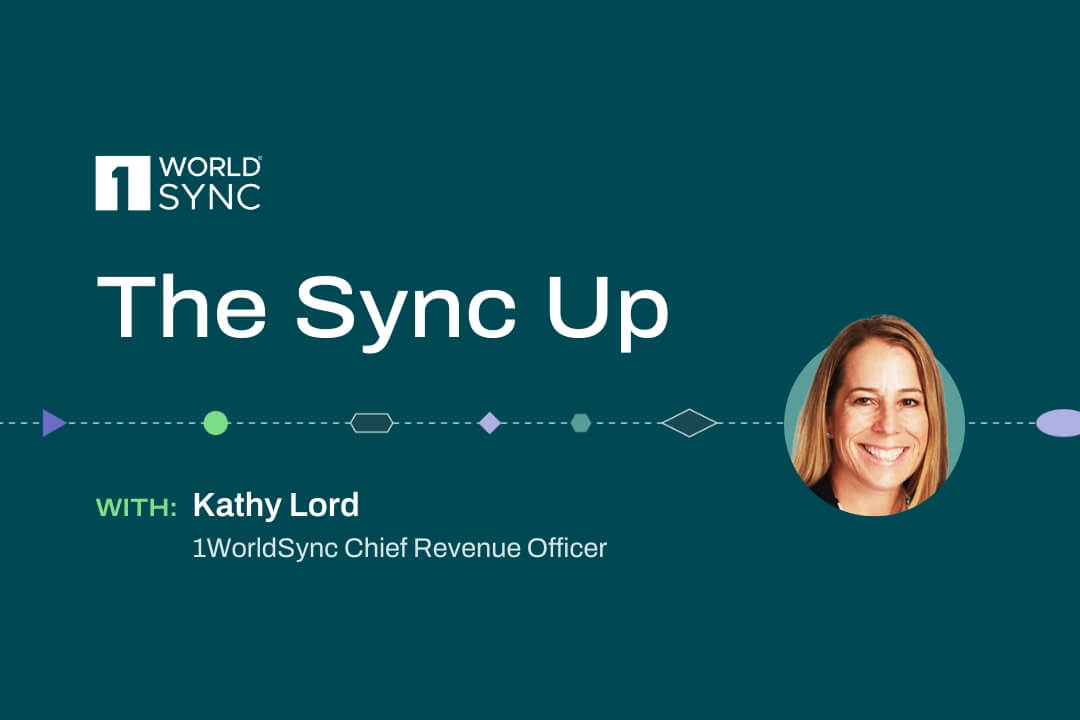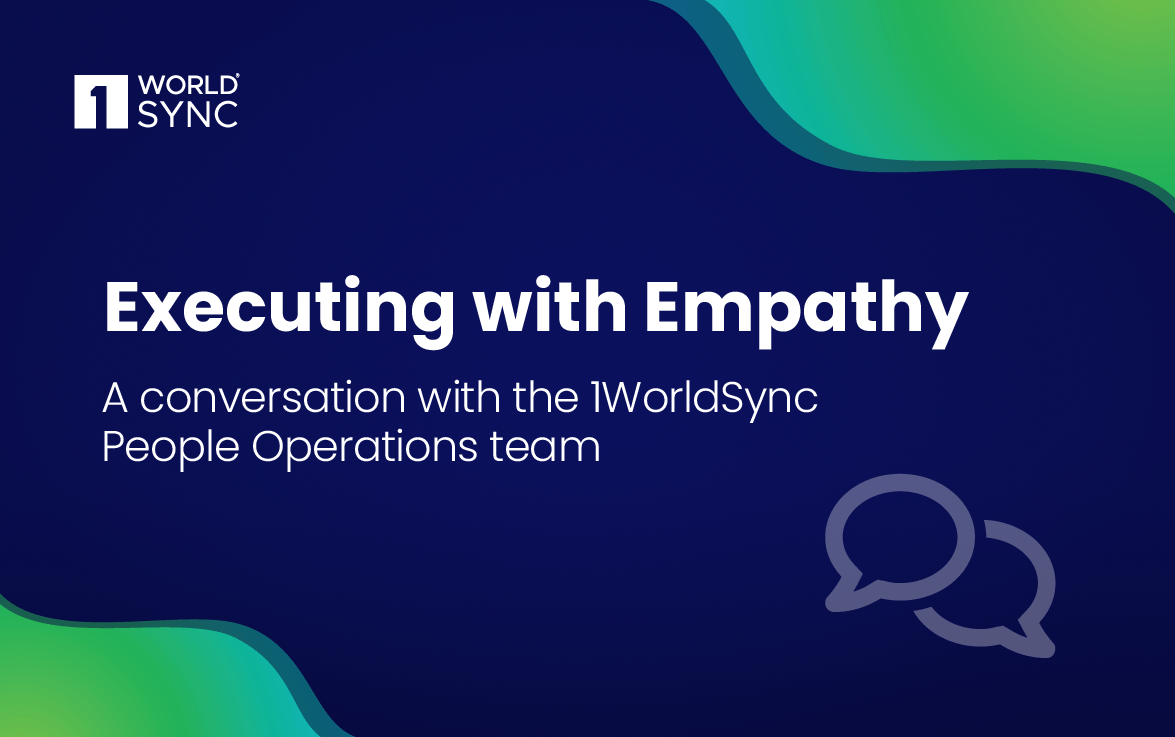The Sync Up: An Interview with 1WorldSync VP of Global Product Management Randal Mercer
October 7, 2021

Breaking down the golden rule of investing in product content that drives digital experiences
With 15+ years of industry experience in technology development, item data and content alignment—8 of which were comprised of leading 1WorldSync’s global product data management strategy—suffice to say that 1WorldSync Vice President of Global Product Management Randy Mercer has seen it all when it comes to global commerce.
As today’s retailers and brands recognize the need to be faster and better at staying ahead of consumer and ecommerce demands, Mercer shares how 1WorldSync is adding more content horsepower behind its products to better drive consumer digital experiences.
You led countless product roadmap and horizon planning strategies. You witnessed numerous brands and retailers come and go over the past 2 decades. Is there anything that still surprises you when it comes to retail or other industries that contribute to the business of global commerce?
Mercer: There are two things that we’re going to continue to be surprised by. One of those is the ways in which search-engine optimized marketing copy is going to be leveraged by retailers to drive their digital experiences. If anyone has attended any of our recent Webinars, it’s likely they’ve heard us speak to the need for very comprehensive, optimized copy. And while that need is going to remain a reality, where the competitive opportunities exist is seeing the unconventional, creative actions that brands and retailers will take with that copy to power the digital experiences. It changes—and fast—because consumers look for those details in product hero images, in videos or any other interactive, quickly digestible content they can rely on.
Advancements in 360-degree spin product photography, where key product attributes are embedded directly in that interactive spin and appear on screen depending on the product angle is but one example. Or embedded text that calls out certain value props of a still product shot or aspects that a consumer would want to know more of based specifically on what is depicted in a particular product image—yet another example. And consumers can then pull up that mobile-optimized product image or 360-degree spin image and learn everything they need to know about the product from a single piece of content to make their purchasing decision. These types of actions are what make up retailer’s and brand’s strategies to provide more efficient, digital experiences. And they rely on that comprehensive, long-form copy to drive their search capabilities. They blow it out into keywords, they rip that long-form copy apart and tailor each piece accordingly with their digital, interactive capabilities, whether it’s through Augmented Reality or another format.
The other surprising aspect of retail and global commerce will be how e-tailers will leverage voice search capabilities moving forward, for the purpose of advancing how products get found online and to remain ADA-compliant. In other words, sourcing product data on the back end to link to words that somebody may say out loud relevant to a particular brand’s product. Think about consumer’s use of this type of capability today—asking Alexa a question while you’re at home, using Siri or even searching for movies or shows via the voice function on your TV remote. Yet a different scenario, I can also contrast this to retailers with a physical store presence that leverage planograms and all kinds of very sophisticated planning mechanisms to strategically get certain products right in front of consumers during their in-store shopping experience. How retailers and brands replicate some of those in-store strategic moves but with voice in mind for ecommerce—we’ll continue to see these creative, unconventional means to optimize product search online and across product detail pages (PDPs).
As you are all too familiar, retail—or any industry that does business in global trade or commerce—is highly competitive. Do you think that there are any retailers or brands, big or small, that are exempt from some of those unconventional and creative ways to drive more digital experiences today?
Mercer: What we get excited by is seeing the variations in sizes of some of the big-box retailers, and then the craft brands both doing really sophisticated things with AI and other means to produce some really great product content. Some of the craft brands understand they operate on a different, and in some cases, smaller scale than some of the larger retailers and brands, and thus know that they have to take some pretty ingenious, creative actions to compete and get as much content horsepower they can behind the product SKUs that they do have. We’re talking product videos, images from every orientation and angle, all kinds of hero images and other aspects that can help them sell.
Do you feel that today’s consumer demands around better product content are applicable to all areas of a retailer or supplier’s business—from the customer success team to the marketing or brand team, to procurement, sustainability, product dev/engineer team and more?
Mercer: It really does depend on who you’re speaking with, where that brand or retailer fits in the marketplace and how much they depend on the public’s perception. Across the board you’re seeing more and more analytics platforms springing up tailored to capture consumer sentiment or what they really need—from reviews to customer surveys, product ratings, and more. If one’s brand has a very specific targeted audience or message—for example providing heart-healthy nutrition, or educational services and support around environmental sustainability—their cross-departmental business functions may all have a dotted line to solving for those consumer expectations.
For those suppliers still struggling with individual departmental siloes or lack of resources to manage product data and syndicate accurately to retailers and trading partners, how is 1WorldSync positioned to help?
Mercer: We’re positioned well to offer our customers a way to both respond to, and proactively plan for how their customers think about their products—and then apply those learnings to their business. Whether that’s through helping them adjust or better search-optimize their marketing assets or imagery, we provide the ways to do that and syndicate that accurately and efficiently to the marketplace and their targeted audiences.
At the end of the day, we want to provide them with the tools that apply to every step of the life cycle. Consider some of their processes today. A new product is created that they need to start selling but they need to create these digital assets—product images, marketing, why-buys—and all the supply chain data to get it out into the marketplace and make consumers aware that it’s available. And then they also have to understand how they’re doing in the marketplace so they can use that as a feedback loop. In other words, reevaluate the beginning of the life cycle and revise marketing copy or branding as needed based on consumer feedback and perhaps even to strengthen supply chain data or update displayed ecommerce product inventory statuses. That is where 1WorldSync is headed—to provide them with a full lifecycle set of solutions that helps them understand all of that and take the right steps to help them succeed, whether it’s online or in their brick-and-mortar presence or both.
That’s where you’ll see us working the hardest over the next 12 months—to fill those gaps for today’s suppliers and the retailers and trading partners and customers that they do business with.
Are there specific key elements of success in providing consumers and buyers with accurate and consistent product content that retailers today should follow?
Mercer: If there’s a golden rule, it’s to invest in multimedia content that you’re going to use to sell your product. What I consistently repeat to today’s retailers and brands is, it’s shortsighted to place such limited investment in creating product content, whether from a cost or resources perspective, that it hinders your products rollout or performance or visibility—all which reflect back on your brand. Consider how much time and hundreds of thousands of dollars are invested into product development. The investment one makes in the product content and assets to provide that digital experience their customers ask for must be of equal importance.
You can’t make your customers work at finding your product or finding the information they need to decide whether they want to buy your product or not. Suppose you want them to be a loyal customer. In that case, you must make that experience easy for them—easy to find online and in stores, and easy to digest the information available to help them make a purchasing decision. It’s all about the end-to-end buying journey for that customer.




